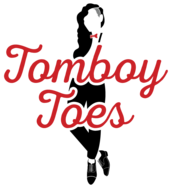When I first came up with the idea of Tomboy Toes, one of my first thoughts was “hey, this would be a great resource for trans men, too!” – from the very beginning, the FAQ contained a question about whether these shoes were for more than just women.
The answer has always been that Tomboy Toes shoes, while marketed at women, are meant for people of any and all identities who had trouble finding masculine dress shoes in small enough sizes. I stood behind that answer and behind the fact that it made me, the founder, feel good to be creating a company that could be beneficial for trans men, masculine of center non-binary people, and anybody else who wanted shoes like these but had smaller feet.
At the time, it felt good. It felt like enough. The fact of the matter is, it wasn’t enough.
The first indication that I had accidentally missed some key ways of being more inclusive came when our photosets on Tumblr started getting spread around with great enthusiasm. I was paying attention to the tags that it was picking up as it made the rounds from blog to blog, and Alex, my good friend and the main model in the photoshoot, was paying even more attention than I was.
When the Tumblr post first went live, the caption described the company as making “men’s dress shoes for women”. I thought it was a clear and clean simplification, the easiest shorthand for what Tomboy Toes does. It failed to account for what Tomboy Toes stands for, however: inclusiveness and the freedom to wear what you want without worrying about the prescriptivist restrictions of traditional gender roles.
One of the tags that appeared on the post remarked on the cissexism of the ad copy. Alex, who uses female pronouns but identifies as somewhat ambiguous on the gender spectrum and wouldn’t describe herself as “a woman”, took the comment to heart. She observed it, she thought about it for a while, and then, as my friend, brought it to my attention.
She asked if I would consider changing the copy of the ad to be more inclusive of people who don’t identify as women.
I will be honest with you. I hesitated.
I was afraid of the backlash. I was afraid of losing potential customers who didn’t want to share a shoe brand with trans men and non-binary people. I was afraid of being sneered at for being too politically correct, for making my wording needlessly convoluted and my elevator pitch inelegant for the sake of catering to a tiny minority.
And then, after that moment of fear, I came to my senses.
The personal appeal of a close friend who was asking for something very, very simple – representation, inclusiveness, and thoughtfulness towards her identity and the identities of hundreds of thousands of people like her – shook me free of that apprehension. My reluctance to offend made way for realization that I didn’t want my shoes being worn by the kind of people who were bothered by inclusive companies. It was an easy change for me to make, and it had significant emotional impact on the marginalized people that it stood to benefit.
I got my priorities straight and a few things became immediately clear. I needed to do more than just dedicate one question on the FAQ page to making sure people understand they’re welcome, they’re included, and they’re thought of respectfully, as people who would really just like to buy a pair of shoes without being misgendered or made to feel awkward.
After making the requested changes to the Tumblr photoset captions, the next step was to update all of the company descriptions on social media. The company’s bios were changed that night to incorporate trans men, non-binary people, and anybody else with smaller feet into the explanation of who these shoes were “for”.
Then there was a big change, one I felt strongly positive about making the moment it occurred to me. Up until that moment, “The Downtown Dappers” had been named “The Dapper Woman”. The product name had to change. I updated it, created some URL redirects, and posted about it on social media just to clarify for anybody who had known the Dappers by their original name and might be confused by the change. Easy peasy.
I rubbed my hands together and called it done, and patted myself on the back.
What I didn’t realize was that I wasn’t actually done.
A matter of a few days later, I received an email through the contact form from a trans man who liked the company but had some concerns about the verbiage on the website. He (very rightly) pointed out that there were issues with it that would make coming to the website and shopping there uncomfortable for many trans men, and was generous enough with his time to point out specific changes that could be made.
The words “woman” and “she” were still being used liberally throughout the website at the time, including in the big homepage sliders and the product descriptions, for example. I looked at it, shook my head, and decided I could do better.
One of the things that's really interesting about human brains is that people tend to be more creative when you place limitations on them. Look at the brilliant comedians who have excelled creating Vines with their miniscule amount of space in which to deliver a clever narrative. Look at the amazing feats of engineering accomplished by people utilizing rudimentary systems like redstone programming in Minecraft.
All three of the headers on the home page are now gender neutral and, frankly, far more compelling than they were before. With an open-ended text box, I’d written some rather unimaginative things about dapper women and women who like men’s shoes. Once I was thinking about it from an angle of inclusiveness, the copy actually got more interesting and meaningful for all of my customers.
For example:
"Our Dappers are the perfect introductory shoe for a handsomely stylish person who wants to start dipping their toes into the more masculine end of footwear but isn't ready to spend hundreds of dollars on shoes."
In the above example, "handsomely stylish person" used to be "nonconforming woman". Frankly, I think the new wording is much more flattering and modern of a description. It’s a positive thing to be, and it focuses on your sense of style rather than your rebellion. Why talk about oppressive social norms on a product page when the point of a company like Tomboy Toes is to be free of them?
Here’s another example from the product page for the Brogues:
"Most people won't notice at first glance that they're built to endure the wear-and-tear of your daily commute - all they'll see is a snappy pair of dress shoes on a sharply dressed professional."
Here, the word "professional" used to be "woman". It’s gender neutral, yes, but it also gets right to the point of presenting yourself according to formality instead of according to gender. And, to be honest, when I’m at work I want to be thought of a professional, not a woman – I’m both, of course, but the essence of loving your work wardrobe is usually, “Dang, I feel like a CEO!” and not “I sure am (gender)!”
Although being given the opportunity to sharpen up the copy on the Tomboy Toes website was an awesome side benefit, the main motivation was to make the website more inclusive, to approach the experience of navigating the shopping experience with more empathy and thoughtfulness.
Am I glad I made all these changes? Absolutely. But the point of this blog post isn’t to pat myself on the back and call it a day. It’s to make it clear that inclusiveness and thoughtfulness is an ongoing process, and that as the owner of this company I consider it my responsibility to be attentive and willing to listen to any and all feedback. The original approach to inclusivity we took was a start but it wasn’t good enough, and I want to acknowledge that shortcoming and take whatever steps are needed to always be the best we possibly can be.
Part of that is making this post. I feel companies and the leadership teams that direct them should be publicly accountable for their impact on the world and their impact on their customers or even just the people who interact with their brand. So here’s my declaration, as the founder and CEO of Tomboy Toes:
Tomboy Toes is an inclusive brand, designed and intended to be worn by women, trans men, non binary people, and people of all other identities. If we ever use wording that makes you feel like you aren’t part of the Tomboy Toes family, please don’t hesitate to let us know.


Leave a comment